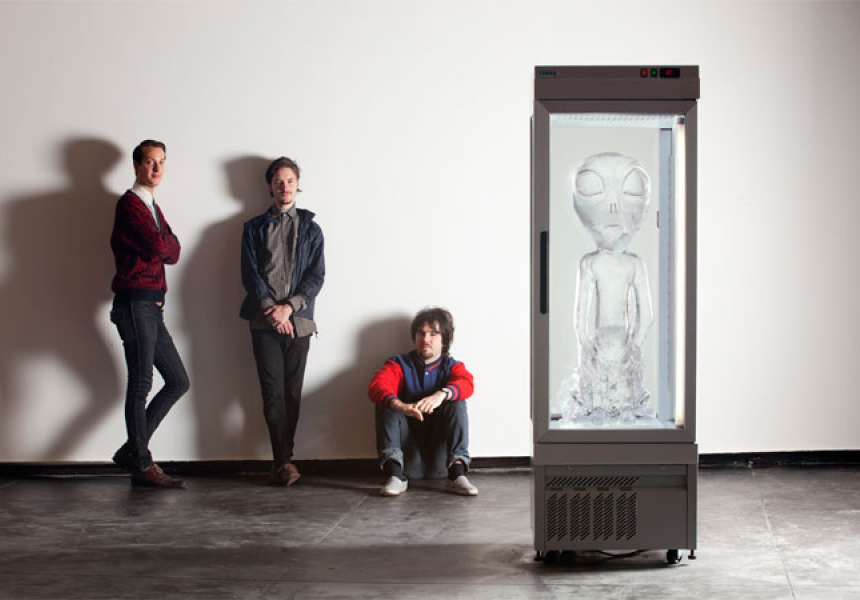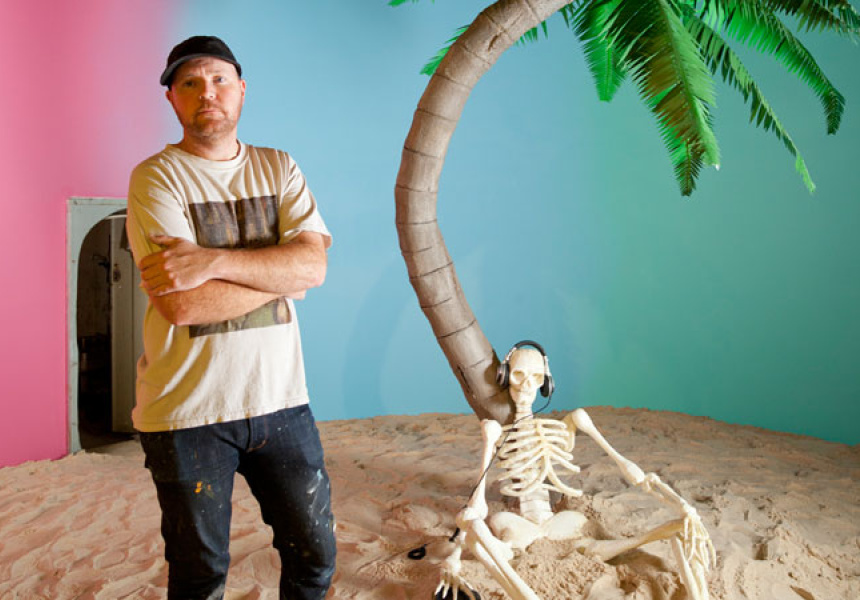Perth artist Brendan Van Hek’s installation, The Person Who Cried A Million Tears, goes some way to expound the underlying premise that cobbles together the 10 new works by 10 Australian artists that comprise this year’s NEW exhibition at the Australian Centre for Contemporary Art.
After last year’s comparatively underwhelming instalment – which saw artists wrangle with often frustrating architectural interventions courtesy of Nexus Designs – Van Hek’s constellation of opaque, colourless mirror balls, inert glass panels, white neon and elevated, egg-shaped mirrors takes its materials and their cultural functions, resonances and narratives to task. Indeed, this work is a negation, a blanking. If the mirror’s function is to reflect that and those around it, then Van Hek’s eerie, colourless spheres are effectively an attack on our own multifarious identities, heritages and histories. They are planets of pure white.
Van Hek’s installation is one among several divergent works – including an affrontingly vivid series of videos by Justene Williams, a textural sound work by Tim Coster, a reprinted 1892 edition the New Australia newspaper by Annie Wu and a an odd mergence of interiors and fashion courtesy of Fiona Abicare – that afford NEW11 its potency.
Never miss a Melbourne moment. Make sure you're subscribed to our newsletter today.
SUBSCRIBE NOWIn the adjoining space, Sydney-based artist Shane Haseman has lined the walls with brash, modernist shards of colour. A bicycle frame sits in the centre of the space; it has giant blue and red triangles for “wheels”. Is this a comment on the binary of style and functionality, or is this the great failing of modernism? Haseman’s room is one filled with hope and colourful promise, but its central device has ground to halt, unable to move. As a functional object, it is inert.
There are plenty more highlights. Mischievous young Melbourne trio Greatest Hits (known to their mothers as Jarrah de Kuijer, Gavin Bell and Simon McGlinn) question not so much their materials, but the very definition of art and art-making itself. By presenting an ice-sculpture – sculpted by someone else – in the image of a stereotypical extraterrestrial, they perpetuate one set of mythologies with another. Dan Moynihan, meanwhile, creates a portal from the mundane (a messy cleaner’s storeroom) into a technicolour desert island, replete with its final (now skeletal) inhabitant.
Rebecca Baumann’s work, Automated Colour Field, is a clear standout. Comprising a perfect grid of 100 split-panel clocks, with each number panel replaced by a solid colour, it exudes an aesthetic and emotional calm, the gentle flip of the cards offering endless palette combinations and moods.
It is like a silent chronicle of time and life’s passing, its aesthetic properties shifting gradually before our eyes in a kind of meditative pulse. Like many of her fellow NEW11 artists, Baumann transforms the mundane into something much closer to the profound.
NEW11 shows at ACCA until May 15.



